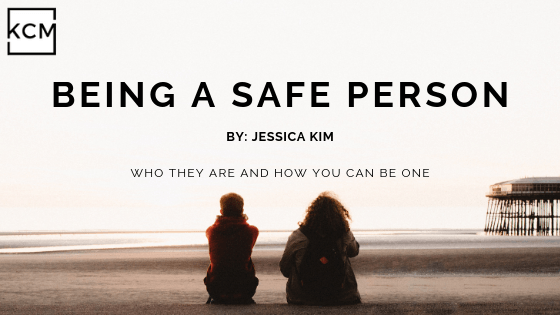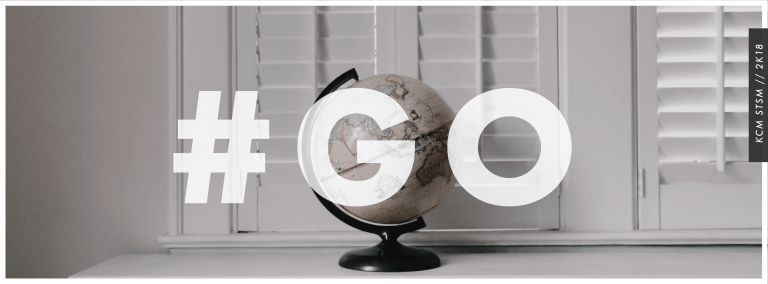When You think You’re Safe, but You’re really Not
It’s safe to say that most of us have come into college hoping to make close lifelong friends. However, I wonder, have you ever shared something deep with someone but left thinking, “I’m never telling anything to that person again?” Or have you ever felt like you had to filter what you share with someone? Maybe on the flip-side, have you ever wondered why some people don’t share with you past surface-level conversations? Why do people gravitate towards certain people but not to you, especially when they need advice? Could it be, that maybe you’re not a safe person? It’s entirely possible that you think you’re safe, when you’re really not.
What is a safe person?
Simply put, a safe person is someone you can be completely vulnerable with because you can trust that he/she will not harm you emotionally. It’s an emotional sense of security. You feel safe being yourself because you know that whatever you say or do will not change the way he/she views or treats you.
Why being a safe person matters
Imagine that there is a physical threat to your safety. A dangerous bear approaches you. Chances are, you will instinctively do one of three things, fight, flee, or freeze. The same response mechanism happens when we feel emotionally unsafe. When we feel like a person is unsafe, our defenses kick in. To protect ourselves from being hurt emotionally, we may close ourselves up, abstain from sharing too much, and even avoid certain relationships. When this happens, it can be challenging for a trusted bond to formed and sustained.
I’ve been unsafe
I have a confession. I’ve been an unsafe person before. When I was serving as a KCM small group leader, one of my girls opened up and shared with us her personal struggle. When she looked to me for a response, I naturally thought that a good leader should reply with a Bible verse and some practical advice of how she should fight her sins. So I quickly jumped to do that. That’s when I saw her face fall; she looked down, and at some point, stopped listening. She shut down. In the weeks following, I noticed she shared more briefly and selectively.
Looking back, this is how I was unintentionally unsafe:
- I prioritized the problem instead of the person: When I put myself in her position, I see that although I meant well, I made her feelings and situation reduced to a mere problem that needed fixing instead of recognizing and validating how much the problem was affecting her. I took the focus off of her and zoomed in primarily on her issues and cared more about providing an answer than caring about her.
- I talked more than I listened: I completely took over and made the conversation more about me, what I thought and knew, rather than listening and sitting with her.
- I tried to reason with her before relating with her: A rule of thumb I was taught as a clinical psychology student is to always try to connect with the person first. Although what you are saying may be completely true, when you try to reason before you relate with them, they will hear you, but may not always listen to you.
Someone who is safe
When I need to share my struggles, I have a friend that I always find myself going to because she embodies and exemplifies the essential characteristics of a safe person in 4 ways. These are the four characteristics I believe will help you feel safe to others:
- My friend actively listens: She fully engages and listens to me. She responds not with an answer or advice about what I should do, but first responds by asking me clarifying questions to understand my experience better and how my struggles are affecting me.
- My friend accepts me: When I share my sins and struggles with my friend, I don’t feel judged or shamed because I know that my friend accepts me. Having an accepting attitude doesn’t mean you are agreeing with the person’s sin and behavior, instead you are trying to accept the whole person.
- My friend empathizes: She tries to put herself in my shoes. She makes statements that reflect that she is trying to understand how I am thinking and feeling rather than expressing her thoughts or feelings, even if she may disagree with me (e.g., I can see how if that happened to me, I would feel angry too).
- My friend lovingly speaks truth into my life: When my friend does #1, #2, and #3, I can trust that if she lovingly rebukes me, it is coming from a place of genuine concern and care, and so I am more open to listen.
The Safest Person
My Safest person and my safest relationship is the one that I have with our Father. I know He is safe because I know I can go to Him just as I am. As the prodigal son returns home without first changing his dirty stained clothes and fixing his behaviors, I have confidence that I can go to God in any state I am in and know I will be invited and welcomed into His arms. The image that comes to my mind when I go to Him in my struggles is Jesus sitting next to me and embracing me with His loving kindness. He is not quick to chastise or scold me for my wrongdoings. The experience of Him being my safe refuge is what ultimately grows my love and my desire to live a life pleasing to Him.
Lastly, the gospel message is about Jesus enduring an extremely unsafe situation, the Cross, and breaking away from His most secure relationship with the Father to ensure this safe relationship with us. I hope, as we reflect on this, we can portray the love of God by being a safe person to others in our community.





